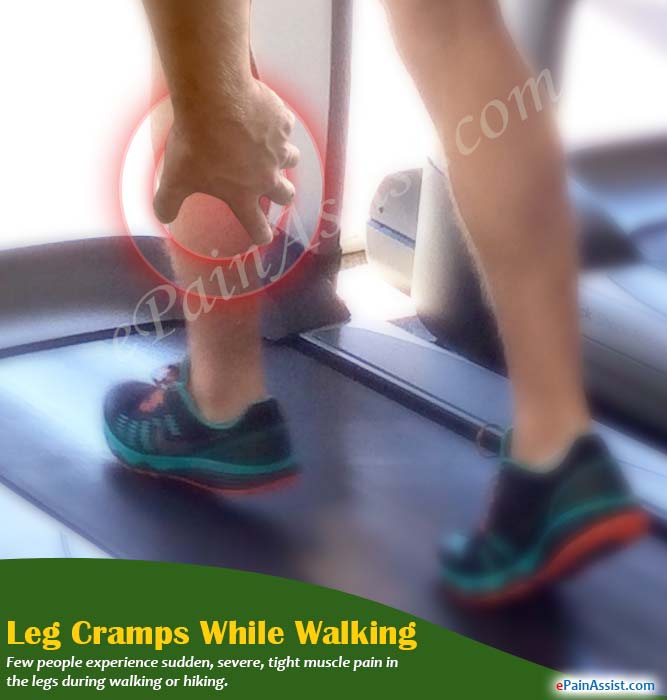Few people experience sudden, severe, tight muscle pain in the legs during walking or hiking. This is called as leg cramp and it mostly occurs in the calf region but may take place in buttock and thigh too. The person, who suffers from it, is completely taken by surprise as the leg muscle contracts violently and remains as a tight knot. It is observed that leg cramps come during walking, can get worse on stopping and goes away with rest. At times it can come and go multiple times and persists even the next day albeit in a mild form.
These leg cramps occur not only during walking or hiking, but they also occur while cycling, running, swimming or playing sports. In addition, leg cramps are common in elderly people.

What Causes Leg Cramps While Walking?
A cramp in muscle is an involuntary contraction (spasm) of the muscle fibres. It can happen to any muscle. Leg cramps are more common in the calves. The following are causes of leg cramps while walking:
Diabetic Neuropathy:
The presence of high blood glucose levels leads to damage of peripheral nerve and blood vessels of the legs and this can cause leg cramps with activities like walking or running.
Chronic Venous Insufficiency:
It is a condition of poor circulation, which involves veins which return blood back to the heart and lungs. There are valves present in these veins, which do not allow backward flow of the blood. In this condition, these valves get damaged. Due to which the blood may flow backwards and accumulate in the veins. This results in legs feeling heavy with tight bursting pain in the groin or thigh along open wounds.
Peripheral Artery Disease:
It is form of artherosclerosis, which leads to most brain strokes and heart attacks. It results due to accumulation of fats and lipids in the arteries and leads to their clogging which in turn obstructs the blood flow. This leads to cramping along with tight pain in the muscles from the narrowed arteries. It commonly occurs in the calf muscle of the leg.
Lumbar Spinal Stenosis:
The lower back region of the spine undergoes narrowing. It occurs due to degeneration of the vertebrae or disks, which further impinge on the spinal canal. This results in pain in the back as well as pain and cramps in the legs while walking or standing or any other activities.
Pregnancy:
Leg Cramps can occur during pregnancy, and in patients undergoing haemodialysis.
Other Causes of Leg Cramps While Walking:
Leg cramps while walking can be caused due to heat, dehydration, vitamin deficiency, muscle fatigue, extensive exercising and use of high heels. These are temporary conditions and in general can be treated or avoided.
Treatment of Leg Cramps
There is no specific treatment strategy for leg cramps. Treatment depends on the identifying the right cause.
- If one gets leg cramps while walking due to heat or dehydration, then it is important to drink plenty of water to keep the body hydrated. Consume electrolyte based drink.
- Take multivitamin tablets containing zinc and magnesium.
- If the leg cramps are recurrent, then to check with the nutritionist to improve imbalances in the diet.
- If the leg cramps occur frequently during exercising or walking, then to take advice from the trainer to check if one is performing exercises correctly.
Conclusion
A cramp in the leg is a common problem and is of frequent occurrence in old age and athletes. It can be result of some underlying medical condition. In addition, it can be caused due to dehydration, vitamin or electrolyte deficiency. Till date the exact underlying mechanism it is not known. There is need to understand its varying pathophysiology which will enable better treatment strategies.
- Mayo Clinic: “Leg Cramps”: https://www.mayoclinic.org/diseases-conditions/leg-cramps/symptoms-causes/syc-20350820
- Healthline: “Muscle Cramps”: https://www.healthline.com/health/muscle-cramps#causes
- Cleveland Clinic: “Muscle Cramps”: https://my.clevelandclinic.org/health/diseases/17069-muscle-cramps
Also Read:
